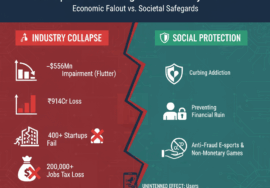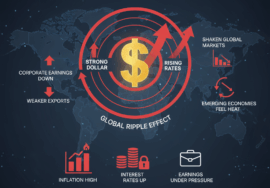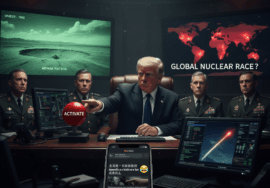Global Trade Tensions Escalate asChinese Manufacturers ExposeU.S. Brand Margins

Global Trade Tensions Escalate as Chinese Manufacturers Expose U.S. Brand Margins
The ongoing tariff war between the United States and China has taken a sharp turn, as manufacturers and media in China are now openly revealing the massive profit margins of American brands operating abroad. What started as a series of trade barriers and diplomatic posturing has now evolved into a full-blown narrative war—one that’s putting long-standing global trade practices under a magnifying glass.
The Price of Branding
Recent posts circulating in Chinese media and social platforms claim that many American products—particularly in fashion and tech—are being manufactured at extraordinarily low costs, only to be sold at exorbitant prices worldwide.
One viral example highlights a luxury handbag made in China for under $100, which later retails for $38,000 in Western markets. Similarly, components and assembly costs for the iPhone are often estimated to be under $10 in China, while the final product is sold at a premium exceeding $1,000 in the U.S. and other countries.
This growing exposure is aimed at challenging the perceived fairness of U.S. trade practices, particularly in the face of rising tariffs and geopolitical tension.
Trade War: Beyond Tariffs
While the U.S. has long pointed to trade deficits and the need for fairer terms as justification for imposing tariffs on Chinese goods, critics—including other global powers—are now pushing back with a different narrative.
The U.S. dollar’s dominance in global trade is under scrutiny, with countries like China, Russia, and several members of BRICS questioning whether the dollar’s role gives the U.S. an unfair advantage. Some argue that the U.S. has built a system in which it can print money freely while reaping the benefits of cheaper goods from abroad, all without the inflationary backlash that might cripple other economies.
A Longstanding Dependency
For decades, American companies have relied on low-cost manufacturing hubs, particularly in Asia, to maximize profits and meet global demand. This dependency has been mutually beneficial to some extent—creating jobs and infrastructure in developing economies while keeping consumer prices low in developed ones. However, the sheer profit margins, now publicly dissected, are raising eyebrows.
“American innovation has been fueled by global labor,” said a Beijing-based economist in a recent interview. “But when that innovation becomes a tool for exploitation rather than collaboration, there’s bound to be a reckoning.”
What’s Next?
The real impact of this “exposure” strategy remains to be seen. U.S. companies may face reputational challenges, especially among younger consumers who are increasingly conscious of ethical sourcing and global equity. At the same time, the geopolitical rift between East and West shows no signs of healing, with both sides digging deeper into nationalist economic strategies.
As tariffs pile up and currencies face pressure, the world is watching closely. One thing is clear: the conversation is no longer just about trade—it’s about who controls the narrative of fairness in a globalized economy.
LINK – https://www.youtube.com/results?search_query=china+mocks+us+manufacturing+industry










